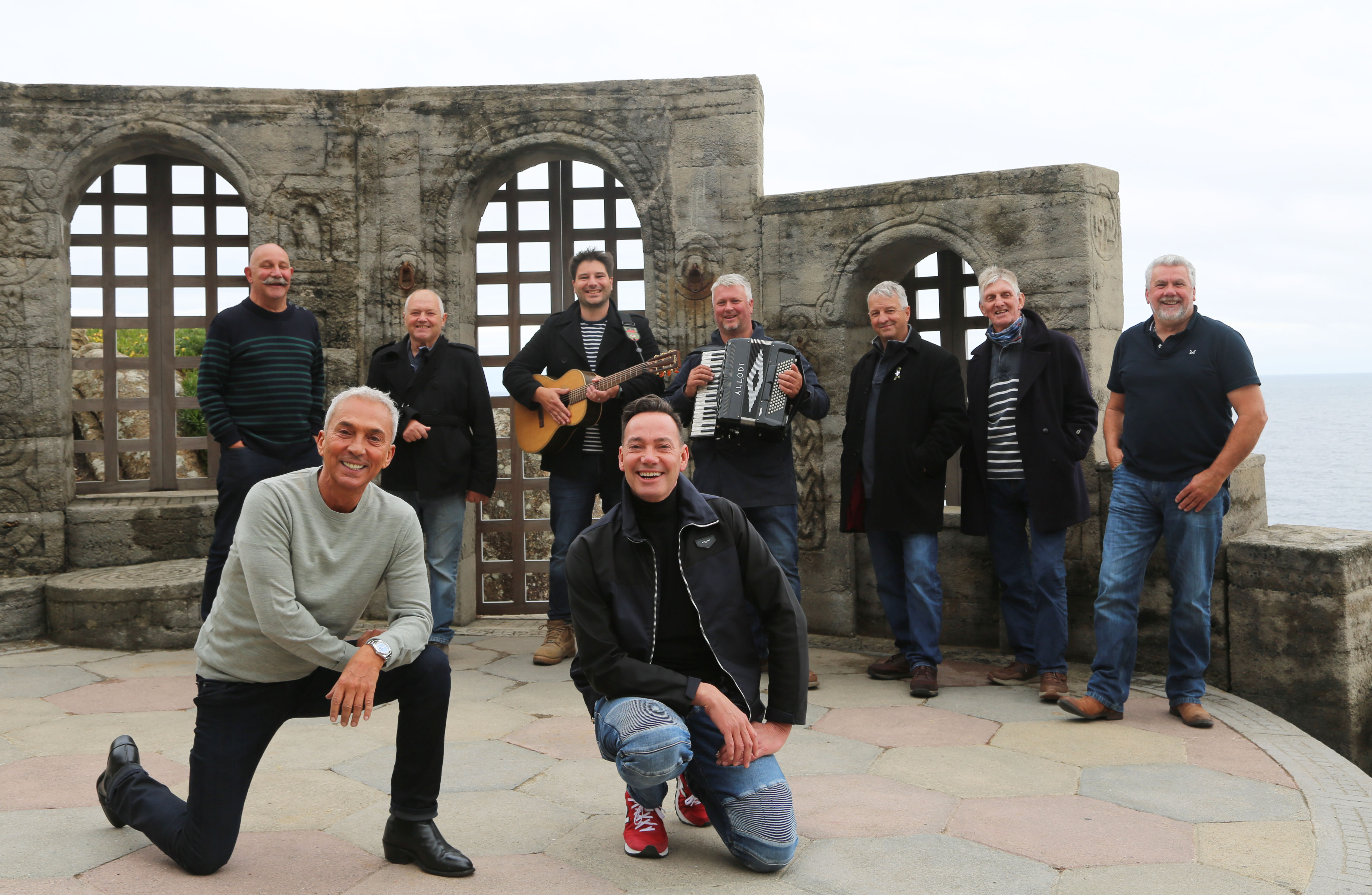To its huge credit, ITV has managed to find perhaps the last two television celebrities who’ve never before been filmed travelling around Britain while exchanging light banter and using the word ‘iconic’ a lot. In Craig and Bruno’s Great British Road Trips, the Strictly judges are driving a Union flag-bedecked Mini through such telegenic staples of heart-warming TV dramas as the Lake District, the Yorkshire Dales and the Scottish Highlands.
For the opening episode, the choice fell on the Cornish coast, which certainly helped the programme achieve its primary aim of looking lovely. But this, as it transpired, was just as well — because for a fair amount of the time, not much else happened. In Newquay, the pair donned Top Gun shades and joined a crab fisherman on his boat. Unfortunately, as the waters were a little choppy, they weren’t allowed to do anything beyond noting how annoying it must be to be a crab, having to ‘do chassés all your life’. They then headed to the oldest mine in Cornwall where, like parents on a family holiday, they tried hard to get us excited about the fact that it has Britain’s ‘last working steam-powered beam engine’ (although without either showing us the beam engine or explaining what one is).
In between, they stuck doggedly to the running joke that Craig drives too slowly for Bruno’s liking, and Bruno too fast for Craig’s. They also sought to inject a note of jeopardy by pretending that any wrong turn would lead to catastrophe — rather than, say, a slight delay.
Craig and Bruno pretended every wrong turn would lead to catastrophe – rather than a slight delay
As you might expect, though, the two old troopers did liven up considerably whenever there was an audience around. At Porthcurno’s weird but gorgeous Roman amphitheatre (built in the 1920s), a handful of spectators was all it took to get them dancing energetically to a sea-shanty group. The group didn’t claim to be brilliant singers but pointed out that, as long you have enough gusto, ‘you can get away with murder’. ‘We know,’ said Bruno. ‘We’ve been doing it for years,’ added Craig with perfect double-act timing.
The big finish — and the show’s jolliest scene — came when the pair swam in ‘Britain’s largest lido’. Bruno finally slipped into the Speedos about which Craig had been joshing him throughout, and the unheated sea water proved cold enough for the ITV bleeping-out machine to go into overdrive. Once again, the presence of an audience — if only in the shape of a few hardy locals — worked its magic. Craig and Bruno were suddenly transformed from people obviously faking enthusiasm to people performing it with convincing aplomb.
And from that, there’s no easy link to Secrets of an Isis Smartphone, even though it began as Craig and Bruno had ended, with a couple of men larking around at an outdoor swimming pool. In this case, however, some of the larking consisted of brandishing automatic rifles.
The documentary, presented by Mobeen Azhar, was based on the premise that ‘you can tell a lot about who a person really is when you scroll through their phone’ — and on something of a coup: the discovery of the hard drives from the phones of three of the apparently 900 Brits who went to fight for Isis in Syria and Iraq. (It’s a somewhat melancholy thought that these jihadis might be the nearest modern equivalent to the International Brigades in the Spanish Civil War.) All three are now dead, but their photos and videos gave us plenty of intriguing glimpses into their time in Syria — the more so as we were never intended to see them.
On the whole, the clips showed the men having fun: in one particularly odd scene, a British jihadi did a pretty passable impersonation of David Attenborough while standing beside a vulture. But maybe unsurprisingly, Azhar never quite answered the question he posed himself at the start: ‘What turns someone into a violent extremist?’ After all, these were young men much like himself — immigrants’ children who weren’t brought up in religiously conservative households, and who displayed no tendency towards violence until they did.
Having (too?) firmly ruled out religion as a motive, Azhar learned from a neuroscientist that extreme ideology disables critical thinking — something we might well have believed even without those blobby images of the brain that TV is so fond of. He demonstrated how heavily Isis ‘marketing’ videos drew on Hollywood techniques. More tellingly, he discovered that two of the men had had learning difficulties. Yet, none of that explains the third man, Mehdi Hassan, who grew up in a middle-class family in Southsea, went to a Catholic private school and got three good A-levels.
Still, if the programme never solved its central mystery, it did provide a powerfully disturbing reminder of just how mysterious that mystery is.







Comments